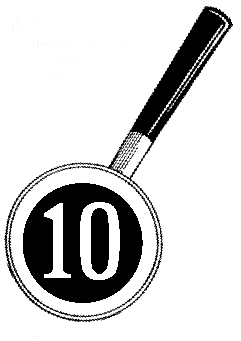|
From
the desk of . . .
Arthur
S. Lazerow
Inspection
Preparation
Occasionally I observe truly awful client
representation
by a Realtor. For instance,
this past Fall a Buyer-
Broker flat out refused to negotiate an issue on
behalf of his client with the Seller. Mostly, however,
I see effective and highly professional representation
by the many Realtors with whom I work.
One exclusive buyer-broker has a terrific idea relating
to home inspections and I asked permission to
pass it along. After several years as a Buyer-Broker,
this Realtor realized Sellers had no idea
how to prepare their home for the inspection. She
wrote an advice page which is attached with every
sales contract. The attachment offers these suggestions:
1. Have all utilities on and appliances operational.
2. Clear all areas around the furnace, boiler, water
heater, and electric panel box for easy access.
3. Make crawl space hatch or attic entrance areas
accessible.
4. Secure pets and turn off security systems.
5. Make all interior rooms accessible and unlock any
outside building, such as a garage or shed.
At least leave keys.
6. If a radon test is scheduled, EPA protocol requires
all doors and window to be closed for the
previous 12 hours, with doors used for ingress
and egress only.
Wouldnt home inspections be easier if every house was
ready, as suggested.

|
|
Ten
Most Common Observations Found During an Inspection
|
Every
home inspection is a different experience
and results in a different set of observations
and recommendations. However
many surveys have shown common
problems and issues. Here is a quick
review of the most common problems
found by home inspectors.
Armed with this information, you can now
give constructive input to your client BEFORE
the home is listed!
1. Improper Surface
Grading/Drainage
this tops the list and is responsible for a diversity of
other problems, including water in the basement.
2. Improper Electrical
Wiring Shocked?
This includes insufficient electrical
service to the home, inadequate
overload protection, and unprofessional
wiring connections.
3. Roof Damage
old
shingles, improper
flashing, too many layers.
4. Heating Systems
broken or
malfunctioning operation controls, blocked chimneys or
unsafe exhaust disposals
all cause a cold front in operations.
|
5. Poor Overall
Maintenance these
are easy to detect,
and include cracked,
peeling or dirty paint, chipped
masonry and broken appliances.
6. Structurally Related
Problems these
are important and often overlooked. Foundation walls, floor
joists, rafters and
headers should all be
examined carefully.
7. Plumbing
check for
the existence of
old or incompatible piping materials,
faulty fixtures and waste lines.
8. Exteriors
windows,
doors and wall surfaces
can allow in water and air, but
rarely have structural significance.
9. Poor Ventilation
older homes
are often
"over-sealed", causing excessive interior
moisture, rotting and premature
failure of structural and
other elements.
10. Miscellaneous
interior components,
often cosmetic in
nature.

|
Continue to page 2
|